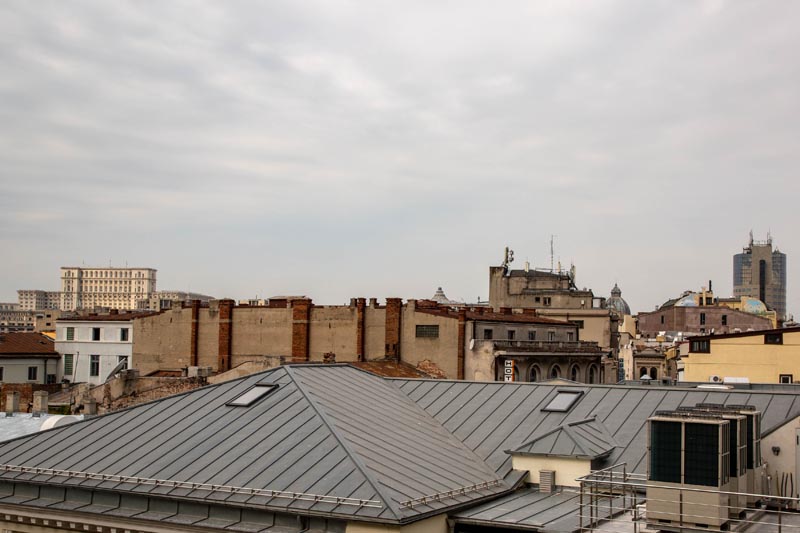Welcome to Paradise in Boquete

1920s establishments in Panama (2 C) 0–9 1920 in Panama (1 P) 1921 in Panama (1 P). Since 1920 the Ruiz family has been growing and processing some of the finest coffee Panama has to offer. For three generations the Ruiz family has transformed what used to be a single-family farm into a specialty enterprise that also processes, packages and roasts. Over the years, Casa Ruiz has earned a reputation fo. Powered by Create your own unique website with customizable templates. This category is for topics specifically related to the decade 1950s in Panama.
We invite you to learn about Panama, its people, places to visit and investment opportunities that we feel are of merit. Our mission is simple. Offer our clients up to date relevant news and provide unparalleled service.
________________________________________
Panama’s Natural Normal
________________________________________
Official website of Panama
Visit Panama
_________________________________
New Exclusive Listing – Boquete Luxury Condominiums – Alto Boquete Condos
We are excited to bring this opportunity to you. This project is perhaps the finest condominium living has to offer. The Penthouse unit is ready for your selection of granite counter tops and more which can be completed easily within 30 days of your selection. Otherwise, it is ready to customize and move in. We have so much to offer in the way of furnishing now here in Panama that this can be delivered as a truly luxury custom home for you. More….
Come see the wonders Boquete has to offer you and the luxury lifestyle available in the Alto Boquete Condos. See more Photos here
Being offered for only $440,000
Beautiful Pool Home in Los Molinos
This home is one of the finest in Los Molinos. With over 4,100 square feet of living area there are 4 bedrooms and 3 and a half baths including a maids quarters, double car garage and huge living room and kitchen. More….
________________________________________________
Panama 1920 Kits Empty Spaces The Blog Ideas
Investment Opportunity
This beautiful condo is located in Los Molinos and it has one of the best views. Numerous windows insure a lot of natural light. Consisting of 1,300 square feet it has a master suite with en suite bath and a guest bedroom along with a guest bathroom.
The Condo’s lease was just renewed for another year and it is likely the tenant will stay on indefinably providing a secure source of income. The rent is $1,000 per month and the expenses are $230 per month which pays the HOA fee and the condo maintenance fee which includes a full time employee who keeps the property in excellent condition.
The net operating income is $$770 or $9,240 per year for a return of 5.16%

______________________________________________
Empty Spaces Song
- Land
- People
- Economy
- Finance, trade, and services
- Transportation and telecommunications
- Government and society
- Cultural life
- History
- The Republic of Panama
Our editors will review what you’ve submitted and determine whether to revise the article.
Join Britannica's Publishing Partner Program and our community of experts to gain a global audience for your work!
Britannica's Publishing Partner Program and our community of experts to gain a global audience for your work! Panama, country of Central America located on the Isthmus of Panama, the narrow bridge of land that connects North and South America. Embracing the isthmus and more than 1,600 islands off its Atlantic and Pacific coasts, the tropical nation is renowned as the site of the Panama Canal, which cuts through its midsection. It is equally well known for its natural beauty, for its diverse plant and animal life, including hundreds of bird and tree species, and for its vibrant music and culture.
The home of several Native American peoples, such as the Guaymí, Kuna, and Chocó, Panama became the first Spanish colony on the Pacific. Celebrated as “the door to the seas and key to the universe,” it served in the 1530s as the staging point for the Spanish conquest of the Inca empire, and until the 19th century it was a transshipment point for gold and silver destined for Spain. With the independence of Colombia, which once controlled Panama, from Spain, Panama came to serve as another staging point, this time for oceangoing migrants to the gold fields of California.
Since 1914 the 51-mile- (82-km-) long Panama Canal, which connects the Atlantic and Pacific Oceans, has afforded a long-sought shortcut for shipping and assures the country’s standing as one of the most strategic transportation hubs of the world. The canal also secures Panama’s ongoing role in international affairs and world commerce. The United States relinquished jurisdiction of the Panama Canal on December 31, 1999, marking an unprecedented shift in Panamanian society. For the first time in nearly a century as an independent nation, Panama controlled the entirety of its national territory.
Panama enjoys a lively mix of cultural influences, expressed in the country’s cuisine, artwork, music, and literature. Its capital, Panama City, is located on the Pacific coast just east of the canal. A cosmopolitan city where skyscrapers tower above whitewashed bungalows, it enjoys a handsome setting and a growing importance as a commercial and financial services centre for the region. However, its economic progress has been hampered periodically by environmental problems and political turmoil.
Land

Relief

Panama is bounded to the north by the Caribbean Sea (an extension of the Atlantic Ocean) and to the south by the Pacific Ocean. It has an elongated S shape, with its Caribbean coastline stretching some 800 miles (1,290 km) and the Pacific coast some 1,060 miles (1,700 km); however, a line drawn from the Costa Rican frontier in the west to the Colombian border in the east would extend only 480 miles (770 km). The shortest distance across the isthmus is about 30 miles (50 km), from the mouth of the Nergalá (Necategua) River, which flows into the Gulf of San Blas on the Caribbean shore, to the mouth of the Chepo River on the Pacific coast. Nearly as narrow is the portion of the isthmus traversed by the Panama Canal.
A central spine of mountain ranges extends almost the entire length of Panama, dividing the country into Atlantic- and Pacific-facing slopes. The two principal ranges, the Tabasará Mountains (Cordillera Central) in the west and the Cordillera de San Blas in the east, are separated near the centre of the country by a saddle of lower land. This depression (the Panama Canal site) divides the country again—roughly into western and eastern halves. Of the four quadrants thus formed, the southwestern has the largest number of settlements; however, the environs of the canal account for most of Panama’s population and commerce. The country’s highest peak is an inactive volcano, Barú (Chiriquí), which reaches an elevation of 11,401 feet (3,475 metres).
Paralleling the principal mountain chains, a lower mountain arc extends along Panama’s southern coast. It appears only in well-separated segments—for example, on Azuero Peninsula as the Canajagua Massif and in eastern Panama as the Sierra de Jungurudó, Sapo Mountains, and the Majé Mountains. The highlands and mountains are made up primarily of igneous (volcanic) rocks.
The lowlands include the plains of Panamá and Chiriquí provinces, the plains and hills of Colón province, the Chepo and Chucunaque river basins in the east, and the narrow northeastern plains of the Caribbean region. Sedimentary rocks such as slates and shales underlie most of the lowland zones.
The Pacific coastline is extended by the Azuero Peninsula and the Gulf of Panama and by numerous headlands and bays, whereas the largest embayment on the Caribbean side is Chiriquí Lagoon. The Pacific coastline is more indented and irregular, and its continental shelf is much wider than that on the Atlantic side. In addition, most of the republic’s more than 1,600 islands lie off its Pacific coast; they include the Perlas Archipelago (Pearl Islands) and the islands of Taboga, Cébaco, Parida, Jicarón, and Coiba, the largest. The principal archipelagoes off the Caribbean coast are those of Bocas del Toro and San Blas.
Drainage and soils
Of Panama’s many short rivers, those that flow to the Caribbean include the Sixaola, Changuinola, Indio, Cricamola, La Miel, and Chagres. Rivers flowing to the Pacific include the Chiriquí Viejo, Santa María, Chepo, Chucunaque, and Tuira. During the rainy season the Tuira is navigable for some 40 miles (60 km) and the Chepo for 20 miles (30 km). Water in the Panama Canal does not flow from coast to coast; rather, it is released from the rain-fed Gatún and Alajuela (Madden) lakes in the central highlands. In effect, the water flows to both coasts simultaneously via the canal’s system of locks and dams. For details on the engineering and operation of the waterway, seePanama Canal.
Soils are commonly reddish to brown and rich in clay. They vary in fertility, and in many areas crops can be grown continuously only if fertilizers are applied. On poorer soils, a shifting subsistence agriculture is practiced. Under this system small plots are cleared, cropped for a few years, then abandoned until their natural fertility is restored—a practice called roza in Panama.
Areas of alluvial soils (which develop from clay, silt, sand, and gravel deposited by streams) are especially fertile but are limited to the lower parts of river valleys. The commercial banana plantations around Puerto Armuelles and in western Bocas del Toro province are mainly on alluvial soils. Some of the soils along the inland edges of coastal mangrove swamps have also proved productive. In some areas, exceptionally fertile soils have developed from volcanic ash.
Panama 1920 Kitsempty Spaces The Blog Free
Panama 1920 Kitsempty Spaces The Blog -
- Official name
- República de Panamá (Republic of Panama)
- Form of government
- multiparty republic with one legislative house (National Assembly [71])
- Head of state and government
- President: Laurentino Cortizo
- Capital
- Panama City
- Official language
- Spanish
- Official religion
- none
- Monetary unit
- balboa (B)
- Population
- (2019 est.) 4,227,000
- Population rank
- (2019) 129
- Population projection 2030
- 4,842,000
- Total area (sq mi)
- 29,081
- Total area (sq km)
- 75,320
- Density: persons per sq mi
- (2018) 143.2
- Density: persons per sq km
- (2018) 55.3
- Urban-rural population
- Urban: (2018) 67.7%
- Rural: (2018) 32.3%
- Life expectancy at birth
- Male: (2017) 75.3 years
- Female: (2017) 81.3 years
- Literacy: percentage of population age 15 and over literate
- Male: (2015) 95.7%
- Female: (2015) 94.5%
- GNI (U.S.$ ’000,000)
- (2017) 53,672
- GNI per capita (U.S.$)
- (2017) 13,100




